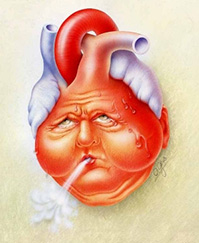With the development of improved microbiologic techniques, there has been increased recognition and identification of non-tuberculous mycobacterium (NTM). Over the past several decades we have accumulated over 100 species of this bacterial group. These organisms are identified through positive acid-fast staining, culture and speciated with 16S ribosomal rRNA sequencing. These bacteria are ubiquitous in the environment living in the soil and water sources. Interestingly, there does not seem to be person to person transmission, which is a major risk factor for other bacterial transfer in certain populations (i.e. cystic fibrosis and B.cepacia). Mycobacterium can be categorized as following:

1. Mycobacterium tuberculosis - TB
2. Mycobacterium leprae - Leprosy
3. Slow growing non-tuberculous mycobacterium - (M. avium, M.kansasaii, M. xenopi, etc.)
4. Rapid growing non-tuberculous mycobacterium - (M. abscessus, M.fortuitum, etc.)
Of the NTM, Mycobacterium avium and kansasaii are the most prevalent, though M. xenopi is common in the province of Ontario (~18% of NTM).
Clinical manifestations of NTM fall into several catgeories:
1. Pulmonary disease - most common manifestation of NTM, often associated with COPD, bronchiectasis, old TB with structural lung disease and cavities. Most common in males, age >50. Presents as chronic cough, sputum production, constitutional symptoms. Imaging studies can reveal consolidation and nodules. Again, these infections are often associated with structural lung disease/cavitation. Subacute pulmonary hypersensitivity can be seen in exposure to M. avium, referred to as "hot tub lung". This is when the exposure is from a large inoculum of organism present uncleaned water from hot tub. It presents with subacute dyspnea, fever, cough, infiltrates and sometimes respiratory failure.
2. Disseminated NTM - seen in immunosuppressed patients, usually HIV. Most common organsims are M. avium and M. kansasaii. Presentation is dominated by fever and other constitutional symptoms. Organomegaly and abdominal tenderness may be seen.
3. Skin/soft tissue/bone disease - associated with catheters and following procedures with break the skin. The organisms involved are M. abscessus, M. chelonae, M. fortuitum and M. marinum. These require source control and antibiotics.
4. Lymphadenitis - more common in children. Present with lymphadenopathy with purulent drainage. M. avium is the most common organism
The case we discussed today was of M. avium in a patient with COPD and cavitary disease. They were taking a macrolide, fluoroquinolone, rifampin and ethambutol. Pateints with bronchiectatic disease without cavities may manage with ethambutol and macrolide alone. The multiple drugs used in our patient was likely related to cavitary disease. The IDSA has guidelines on the management of NTM, which can help guide therapy. Its a challenging disease to treat, which usually requires at least one-year of antimibrobial therapy following negative cultures (hence it often is longer). Monotherapy with macrolides should be avoided to prevent resistance development. Intravenous regiment with amikacin or carbapenems are sometimes required and carry signficant toxicities. Different species require different regiments and resistance patterns should be considered. Patients can from surgery if there is local disease (specifically with M. abscessus).
See the following link for the guidelines
NTM IDSA guidelines






